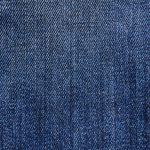Are you curious about whether silk is a tightly woven fabric? Look no further! In this article, we will delve into the properties of silk fabric and explore the intricate weaving process.
We will also take a closer look at the thread count and tightness of silk weaves, as well as the various factors that can affect these characteristics.
By the end, you will have a comprehensive understanding of the pros and cons of tightly woven silk fabrics.
So let’s get started!
Table of Contents
The Properties of Silk Fabric
Silk fabric is known for its luxurious feel and sheen. When it comes to durability, silk fabric is surprisingly strong. Although it may seem delicate, silk is actually one of the strongest natural fibers available. This is due to the tightly woven structure of the fibers, which gives silk its strength and durability. The tightly woven fibers also contribute to the fabric’s resistance to tearing and fraying, making it a great choice for long-lasting garments and accessories.
To ensure the longevity of your silk fabric, proper care is essential. Silk should be hand washed or put in a delicate cycle on your washing machine with a mild detergent. Avoid using bleach or harsh chemicals, as they can weaken the fabric. After washing, gently squeeze out excess water and lay the fabric flat to dry. It is important to avoid wringing or twisting the fabric, as this can damage the delicate fibers.
In addition to proper washing, silk fabric should also be stored carefully. Avoid hanging silk garments, as this can cause stretching and distortion. Instead, fold them neatly and store them in a cool, dry place. It is also advisable to store silk garments away from direct sunlight, as prolonged exposure to sunlight can cause the fabric to fade.
Understanding the Weaving Process of Silk
When it comes to understanding the weaving process of silk, there are several key points to consider.
First, silk weaving techniques involve intricate patterns and delicate craftsmanship that have been passed down through generations.
Second, the characteristics of silk, such as its lustrous sheen and smooth texture, make it a highly desirable fabric for clothing and home decor.
Silk Weaving Techniques
To weave silk, you’ll need to use various techniques such as warp and weft to create a tightly woven fabric. Silk weaving techniques involve carefully manipulating the threads to ensure a strong and durable fabric.
The warp refers to the vertical threads that run parallel to the selvage, while the weft refers to the horizontal threads woven over and under the warp. By interlacing these threads, weavers create a solid and cohesive fabric.
To measure the tightness of silk, a common method is using a tool called a ‘picks per inch’ or PPI gauge. This gauge helps determine the number of weft threads per inch of fabric. The tighter the weave, the higher the PPI count, resulting in a smoother, more luxurious silk fabric.
Characteristics of Silk
One of the characteristics of silk is that it feels incredibly smooth and luxurious against your skin. Silk fabric is known for its soft and silky texture, making it a popular choice for clothing and bedding.
Silk is made from the cocoons of silkworms, which are spun into fine threads. These threads are then woven together using various silk weaving techniques to create the fabric. Silk weaving involves carefully interlacing the threads in a tight and intricate pattern, resulting in a strong and durable fabric.
The tightly woven structure of silk not only gives it its characteristic smoothness but also makes it resistant to wrinkles and creases. In addition to its luxurious feel, silk is also lightweight, breathable, and has excellent moisture-wicking properties, making it an ideal choice for both warm and cool climates.
Silk Fabric Properties
If you touch silk, you’ll notice how incredibly smooth and luxurious it feels against your skin. This is because silk is known for its fine and delicate texture, which is a result of its tightly woven fabric. Silk weave patterns play a significant role in determining the quality and appearance of the fabric.
Some common weave patterns include plain weave, satin weave, and twill weave. Each pattern creates a unique texture and sheen. However, caring for silk fabric requires special attention. It is recommended to hand wash silk garments using a mild detergent and cold water. Avoid wringing or twisting the fabric and instead gently squeeze out the excess water.
To maintain the fabric’s smoothness, it is advisable to iron silk while it is slightly damp or use a steamer. By following these care instructions, you can prolong the life and beauty of your silk garments.
Examining the Thread Count of Silk Fabrics
Silk fabrics with a higher thread count tend to be more durable and have a smoother texture. When examining the thread count of silk fabrics, it is important to understand that thread count refers to the number of threads per square inch of fabric. The higher the thread count, the tighter the weave of the fabric, resulting in a smoother and more luxurious feel.
To further understand the relationship between thread count and silk fabric tightness, let’s take a look at the table below:
| Thread Count | Fabric Tightness |
|---|---|
| 200-400 | Loose |
| 400-600 | Medium |
| 600+ | Tight |
As shown in the table, silk fabrics with a thread count ranging from 200 to 400 are considered to have a loose weave, while those with a thread count of 400 to 600 have a medium weave. Fabrics with a thread count of 600 or higher are tightly woven, resulting in a more durable and luxurious fabric.
When choosing silk fabrics, it is important to consider the desired level of fabric tightness based on personal preference and the intended use of the fabric. Whether you prefer a loose, medium, or tight weave, understanding the thread count of silk fabrics can help you make an informed decision.
Comparing the Tightness of Silk Weaves
When it comes to silk fabrics, one important factor to consider is the tightness of the weave. The tightness of a silk weave can affect its overall quality and durability.
In order to measure the tightness of silk, there are various methods and tools available, such as the thread count and the pick count.
Silk Weave Tightness?
The tightness of a silk weave affects its overall durability and strength. When the silk fibers are tightly woven together, it creates a fabric that is more resistant to tearing and fraying.
Here are four ways that silk weave tightness can be visualized:
-
Imagine a tightly knit net with no visible gaps between the threads, forming a smooth and even surface.
-
Picture a dense forest with closely spaced trees, creating a barrier that is difficult to penetrate.
-
Visualize a tightly woven basket, where the interlaced strands create a sturdy structure that can hold its shape.
-
Think of a tightly woven spider web, with each strand meticulously placed to form a strong and intricate pattern.
Measuring Silk Tightness
To measure how tight silk is, you can use a fabric gauge or a ruler to determine the number of threads per inch. Measuring silk tightness is important as it affects the durability, appearance, and performance of the fabric.
Tightly woven silk fabrics have several pros and cons. On the positive side, tightly woven silk fabrics are more durable and less prone to snagging or tearing. They also tend to have a smoother appearance and better draping qualities. However, tightly woven silk fabrics can be less breathable and may not have as much natural stretch or flexibility. Additionally, they can be more difficult to sew or manipulate due to their denser construction.
Overall, measuring silk tightness allows you to choose the right fabric for your specific needs and preferences.
Comparing Silk Weave
You can compare different weaves of silk by examining their thread count and the spacing between the threads. The tightness of a silk weave can greatly impact its quality and performance.
A tightly woven silk fabric has numerous benefits. Firstly, it provides better insulation, keeping you warm in colder temperatures and cool in warmer climates. Secondly, tightly woven silk is less prone to snags and tears, making it more durable and long-lasting. Additionally, it offers a smoother and more luxurious feel against your skin.
Tightly woven silk fabrics also tend to have a higher sheen and luster, enhancing their overall appearance. When shopping for silk products, be sure to examine the weave tightness to ensure you are getting the best quality and value for your money.
Factors Affecting the Tightness of Silk Fabrics
When choosing silk fabrics, factors such as the tightness of the weave can greatly affect the overall quality and durability. The tightness of the weave refers to how closely the silk threads are woven together. A tighter weave generally indicates a higher quality fabric that is less prone to snagging or tearing.
There are several factors that can affect the tightness of the silk weave. The most important factor is the density of the warp and weft threads. The more threads per inch, the tighter the weave will be. Other factors include the tension and skill of the weaver, as well as the thickness and quality of the silk threads themselves.
To measure the tightness of a silk fabric, you can perform a simple test. Using a ruler, count the number of threads per inch in both the warp and weft directions. The higher the thread count, the tighter the weave. Additionally, you can examine the fabric closely to look for any gaps or inconsistencies in the weave, as these can indicate a looser weave and lower quality fabric.
Pros and Cons of Tightly Woven Silk Fabrics
One advantage of a tight weave in silk fabrics is that it provides increased durability and resistance to snagging or tearing. This means that tightly woven silk fabrics are less likely to get damaged easily, making them a more long-lasting and practical option.
However, there are both pros and cons to using tightly woven silk fabrics. Here are a few key points to consider:
-
Pros:
-
Enhanced durability: Tightly woven silk fabrics are stronger and more resistant to wear and tear, making them suitable for everyday use and high-traffic areas.
-
Improved snag resistance: The tight weave minimizes the chances of snags or pulls, ensuring a smoother and more uniform appearance.
-
Better shape retention: Tightly woven silk fabrics tend to hold their shape better over time, maintaining their original structure and preventing sagging or stretching.
-
Cons:
-
Reduced breathability: The tight weave restricts airflow, making tightly woven silk fabrics less breathable and potentially uncomfortable in hot or humid conditions.
-
Limited drape: Tightly woven silk fabrics can be stiffer and less fluid, which may limit their suitability for certain garments or applications that require a more flowing drape.
-
Increased cost: Achieving a tight weave in silk fabrics requires more time, effort, and resources, which can result in higher production costs and ultimately a higher price for the consumer.
Conclusion
In conclusion, silk is indeed a tightly woven fabric. Through the weaving process and examination of thread count, it is clear that silk fabrics are tightly constructed. However, the tightness of silk weaves can vary depending on various factors such as the type of silk and the skill of the weaver.
Tightly woven silk fabrics have their advantages, such as durability and protection against the elements, but they may also have drawbacks like being less breathable. Overall, understanding the tightness of silk weaves can help in making informed decisions when choosing silk fabrics for various purposes.
- How Does Ring Spun Cotton Affect Garment Fit and Shape Retention? - August 13, 2024
- What Are the Challenges in Producing Ring Spun Cotton? - August 13, 2024
- Is Ring Spun Cotton Suitable for Plus-Size Clothing? - August 13, 2024





